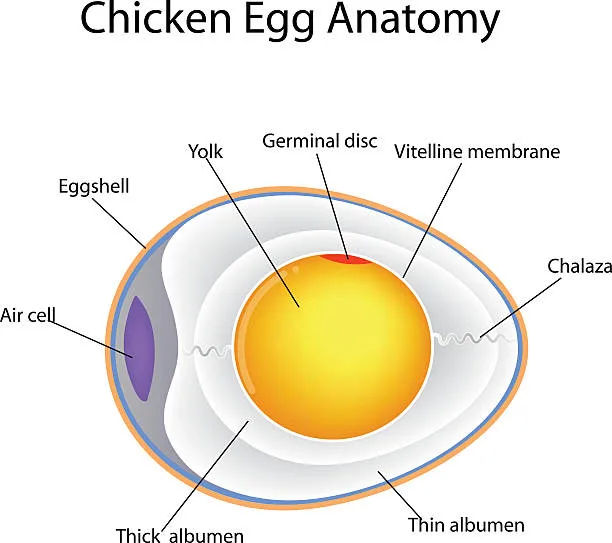Looking for a particular chicken breed or want to hatch your very own chicks? Read on to learn how to incubate chicken eggs step by step!.
This post contains affiliate links: I am grateful to be of service and bring you content free of charge. In order to do this, please keep in mind that if you click on links and then buy something, I may get paid a referral fee. By buying through these links, you help me keep sharing information to help you start homesteading, and it doesn’t cost you anything extra.
Get together with more than 200,000 other gardeners and homesteaders to listen to the popular Homesteading
Incubating and hatching chicken eggs is an incredibly rewarding experience. There’s something magical about watching a tiny chick emerge from its egg after 21 days of careful tending. With the right setup and techniques, you can successfully hatch healthy chicks at home. Here’s a comprehensive 21-day guide to incubating chicken eggs.
Selecting and Storing Eggs
-
Choose clean, oval-shaped eggs free of cracks or flaws. Avoid extra large or small eggs.
-
Fertile eggs should be incubated within 7-10 days of being laid. Store at 55-65°F, small end down, and turn daily.
-
Let shipped eggs rest 24 hrs before setting Store upright with air cell up.
-
Don’t wash eggs before incubating, The “bloom” protects against bacteria
-
Expect 50-75% of fertile eggs to hatch. Shipping reduces hatch rate to ~50%.
Setting Up the Incubator
-
Ensure temperature is steady at 99.5-100°F (forced air) or 101-102°F (still air).
-
Maintain humidity at 45-55% for days 1-18. It will rise naturally late in incubation.
-
Allow fresh air exchange 4+ times daily (still air incubators). Eggshells are porous.
-
Use a hygrometer to monitor temperature and humidity.
-
Let eggs come to room temp before setting to prevent cracking.
Incubating (Days 1-18)
-
Mark eggs with X on one side, O on the other to track turning.
-
For the first 18 days, turn the eggs at least three times a day. Prevent embryos from sticking.
-
Candle at day 5-7 to check for fertility and development. Discard clears after day 10.
-
Monitor air cell size and position. Should be small early and get progressively larger.
-
Keep eggs large end up or horizontal. Never incubate with small end elevated.
Lockdown (Days 19-21)
-
Stop turning eggs on day 18 and increase humidity to 65-75%.
-
Resist opening the incubator. Chicks need stable conditions to hatch.
-
First external pips typically occur on day 20-21. Hatching takes 12-24+ hrs after.
-
Allow chicks 24 hrs to fully dry and fluff before removing from incubator.
-
Discard unhatched eggs after day 25. Do not assist hatches unless critical.
Brooding Chicks After Hatching
-
Move chicks to a prepared brooder with food, water, heat source, bedding.
-
Use medicated chick starter for immunity. Provide marbles in water to prevent drowning.
-
Maintain brooder at 90-95°F for the first week, lowering by 5°F each week.
-
Observe chicks closely. Adjust conditions to keep them comfortable and thriving.
Troubleshooting Common Incubation Issues
No pips on day 21 – Be patient. Wait 24-48 hrs before assisting. The hatch process is delicate.
Pips without progression – Increase humidity slightly. Chicks may be stuck to membrane.
Early pips or embryos – Temperature too high. Lower it incrementally back to normal range.
Late pips – Temperature too low. Raise it slowly to recommended levels.
Misaligned/malformed embryos – Eggs not turned properly. Ensure all get rotated.
Blood rings – Incubation issues like temperature swings. Hatch not likely to succeed.
Dead chicks – Review conditions. Common causes are incorrect temp/humidity, poor turning.
Incubating chicken eggs is a 21-day commitment that requires close attention to details like temperature, humidity, ventilation, egg turning, and hatching conditions. Follow these guidelines and you’ll be rewarded with a high hatch rate and healthy chicks. With each hatch you’ll gain experience and improve your techniques.

Lockdown – Step 4
On day 19, we want to increase the humidity so that the chicks can hatch out of the eggs and not get shrink-wrapped in their shells. Follow your incubator’s instructions for adding water to increase the humidity to 70%. Remove the automatic egg turner and if you like, put in some clean and sanitized rubber shelf liner to help your chicks have a grip and walk around.
Next, check the incubator
I start mine at least a day before I’m going to put in my eggs. I want to check that the incubator is holding temperatures and humidity, that the automatic turner is working, there are no unexpected leaks.
It was 100F when I put my two backup probes inside to check the readings and make sure the incubator was set correctly. For chicken eggs, the temperature needs to stay between 99F and 102F. If it gets too hot or too cold, the developing chicks inside the egg could die.
After testing, I sanitize the incubator inside and out, and the probes. I want everything clean because eggs are porous and can easily be contaminated by bacteria. So clean and sanitize according to the instructions that come with your incubator. Sanitizing is the last step. I clean with hot soapy water, rinse, dry, then sanitize and let the sanitizer air dry but check with what your incubator says for cleaning and sanitizing instructions.
Incubating Chickens is SUPER Easy!
FAQ
How to incubate chicken eggs?
Fertilized chicken eggs were incubated in a humidified incubator at 37. At 6 °C for 4 days, two small holes were made in the eggshell at the side and the blunt end.
How long does it take a chicken egg to incubate?
It usually takes 21 days for a chicken egg to fully incubate. A day is the full 24 hours after you put the egg in the incubator, so I write the next day’s date on the egg to remind myself what day I started incubating. So, if I put eggs in the incubator on January 18, I write 1/19 on the egg.
How do you put eggs in an incubator?
Place the container in the incubator. Close the lid on the container containing the eggs. Then, place the container in the incubator. Write down the date the eggs were laid and put in the incubator. Then, figure out when they should hatch and put that date on your calendar. Monitor the temperature.
How to incubate chicken eggs for beginners?
When it comes down to it, incubating chicken eggs means putting fertilized eggs in a warm box for 21 days. The temperature is kept between 99-102F. You need to turn the eggs at least 3 times a day for 18 days. On day 19 you stop turning your eggs this is called lockdown and chicks will hatch on day 21.
How long after a chicken lays an egg can you incubate?
Can you incubate chicken eggs without an incubator?
Yes… as long as there’s a heat source keeping it at roughly 95.5 degrees for 21 days. For instance some people have had success with a lightbulb and a box, historically kilns were used before modern incubators, and today whole rooms can be kept at the right temp to hatch many hundreds of eggs within them.
Should my incubator be in the dark?
Overall, the related literature review shows that lighting during incubation is not crucial as other incubation factors do. Therefore, under commercial conditions, embryos are incubated in the dark.
